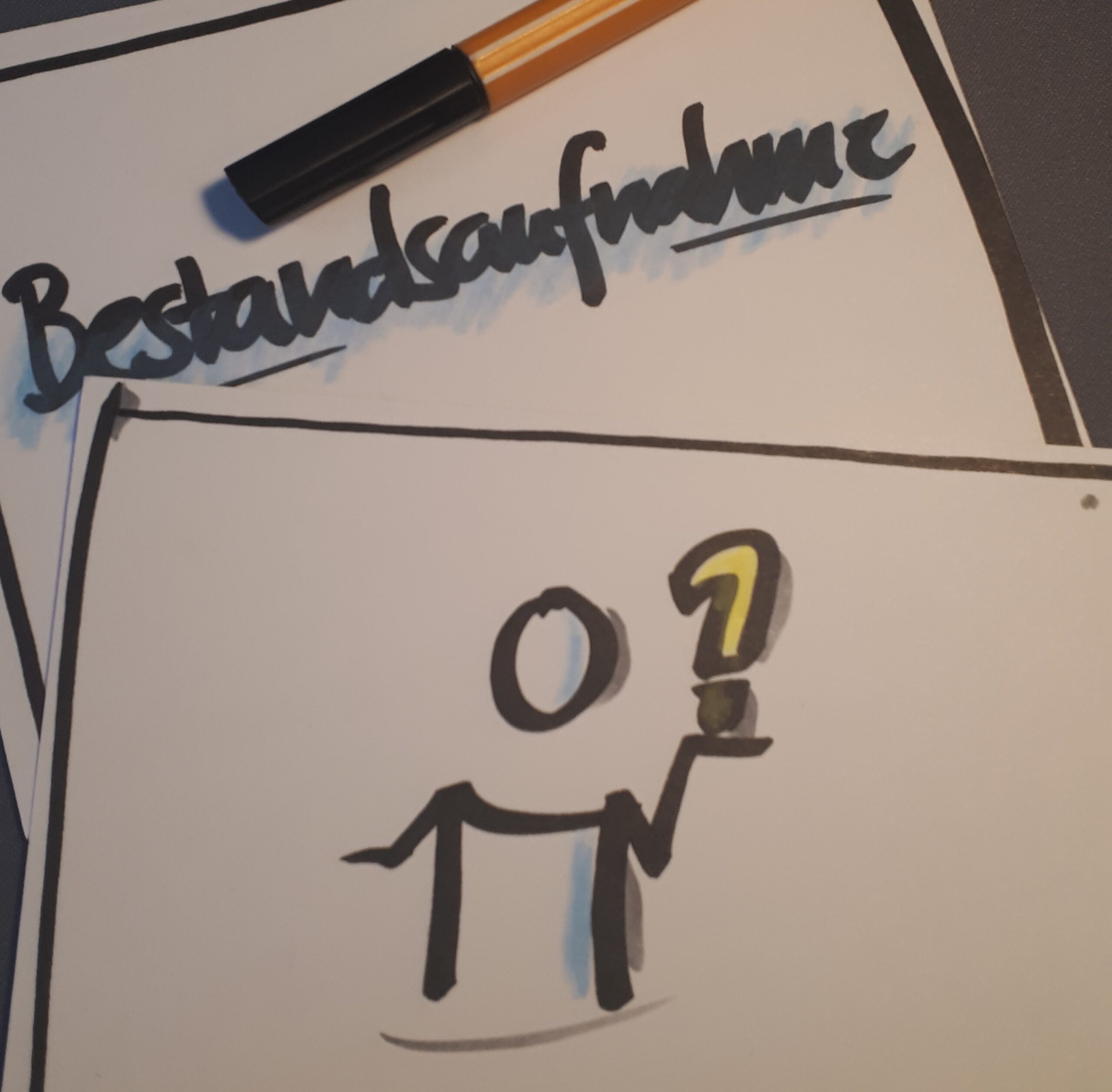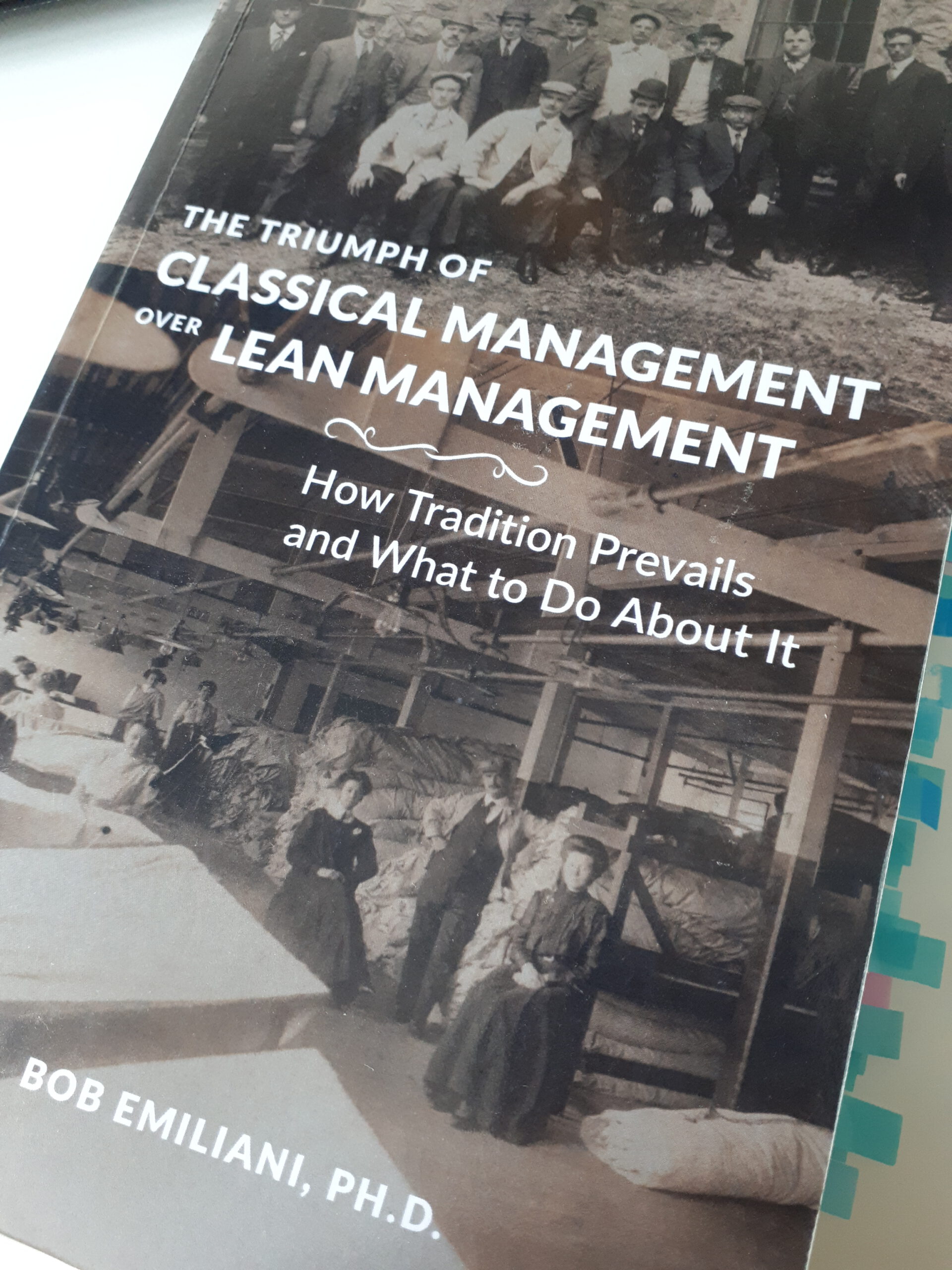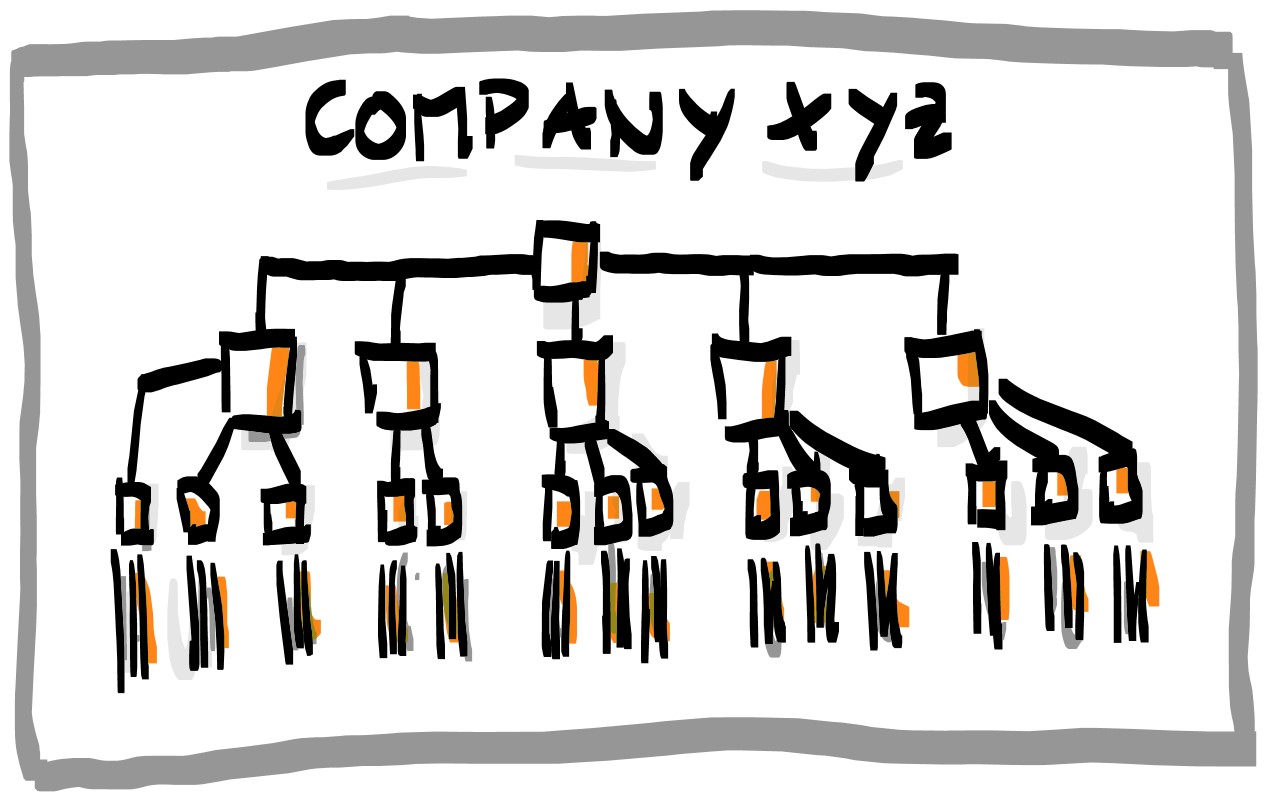Agile change makes for more flexible, customer-centric, perhaps even more value-driven companies. Really? Some uncomfortable thoughts on the unloved subject of power.

Often it’s casual incidents that have a big impact on us. Experiences, encounters, sentences that seem insignificant to us in the current moment and then reverberate and slowly begin to have an effect. That’s what happened to me when my dear colleague Carolin, in a nice conversation about God and his wife some time ago, said in passing: “Oh, you Agile people completely ignore the subject of power.”
For a brief moment, I felt challenged. But then I thought to myself that Carolin probably knows too little about Agile. Power is definitely dealt with in Agile frameworks, and how to handle questions of power is clarified without a doubt. That’s how I saw it back then. And that’s how I see it today, too.
If done correctly, Agile finally ensures that roles are either clearly defined (e.g. Scrum) or at least discussed as openly as possible (e.g. Kanban): Who decides what? When?
For me, this is one of the biggest advantages that Agile approaches have in general. It effectively and pragmatically eliminates status ranks, which in hierarchical organizations, this is well known, reliably prevent good action from being taken quickly and with focus. “We are still waiting for the boss to give the OK” – In agile teams, we are (largely) done with this. /1/2/
In one way or another, I justified to myself and of course to Carolin why power is not a blind spot. Not for agility in general. Not for convinced Agile people. And certainly not for an Agile professional like me. And that’s that. That was the end of the matter. And the conversation turned to other things.
Close Your Eyes and Walkthrough?
But to my surprise, it didn’t end there. “You Agile people don’t talk about power at all.” I couldn’t get my mind off that sentence. And again and again, I wondered if there wasn’t something to it. Am I missing something? Because apart from the roles, competencies, and processes in the Agile team, which regulate who decides what and when for the production of results:
- What does Agile and with it, the Agile scene say about questions of power in organizations, about how major directional decisions are made by organizations?
- What do Agile and Agile professionals think about this?
- What do their answers look like?
- What’s their advice i.e. to the question of how to get your bosses to act more agile themselves, instead of still demanding excessively detailed reporting for ongoing projects or constantly making ad-hoc changes?
- Do we even know enough about power and politics, its structures, and its dynamics?
- To what extent do we use this knowledge?
- How do Agile consultants, coaches, change agents, scrum masters, product owners deal with the matter in their work in a fundamental and concrete way?
My suspicion, somewhat sobering: It is quite possible that we have dealt with these questions in a rather superficial way so far. And if so, then it is rather one-sided, in order to produce acceptable results smoothly, purposefully, and – above all – quickly. That is not bad at all. But is it enough? Is that all we want?
Something must change in our organizations!
Times are getting more and more uncertain, we are facing more and more complex challenges that we can foresee less and less! With our present means, we are reaching our limits! Our hierarchically managed organizations work too slowly, too cumbersomely, and do not meet the needs anymore! They become a danger! So we need faster, more transparent, more permeable, more flexible, in other words: more Lean or Agile structures. So that we can recognize important developments together, again and again, and quickly, and act in a coordinated manner!
Lean approaches and Agility with their principles and merciless focus on value creation are the salvation!
At least that’s what we like to present with great conviction.

One Eye, Two Thumbs, and Just Superduper?
But if you take a closer look, something may not be quite right. If our diagnosis is correct and if Agile really is superior to classical forms of organization: Why haven’t many more companies and other organizations been working according to Lean standards or Agile for a long time now? Why is there – seventy years after Lean and forty years after Scrum! – still no organizational breakthrough?/3/ Why do so many Agile change projects and Lean initiatives remain halfway through? Even the ones that were started hopefully and with verve? Although we as experts are often involved in them?
Wouldn’t it be our task, as convinced and professional Agile organizational empiricists, to ask ourselves exactly these questions again and again: Did we actually achieve what we were supposed to achieve? And if not, why not? What is to be done differently? What can/must we improve? /4/
Lean consultant Bob Emiliani pursues such critical questions relentlessly and openly in his book “The Triumph of classical Management over Lean”./5/
The questions and points he raises are painfully uncomfortable. They jeopardize the success and superiority narrative and perhaps even the one or other pleasing self-image: What does it say about us, our expertise, and the quality of our work if we have not yet managed to promote and establish Lean and Agile on a broad scale?
This is anything but an accusation or self-accusation. It is much more important to find the reasons, why we have failed so far, in order to improve and do better. So: Is Lean and Agile not as good or as powerful as we believe and claim (certainly not!)? Or are we just not communicating it well enough (no way!)?
So why do Lean and Agile initiatives fail? Why is there no resounding, widespread success? What are we overlooking?

Get Out of Your Relieving Posture!
Perhaps we are overlooking that we – consciously or unconsciously – avoid unpleasant insights? For example, that for successful Agile changes it is not enough to establish and optimize Agile structures in the teams and achieve good work results? That it is very necessary to use our professional expertise and enthusiasm to plunge into the depths of the historical, conflict-ridden, status-mined, fear-filled relationship work.
Thus: We have also to work intensively with management? That above all the visible and invisible politics in organizations are to be considered and worked on? In other words: In addition to the ABC of Lean and Agile methodology, the rules of power are also to be learned and played by heart (Yuck!)?/6/
However, if we draw a blind eye to this, we should at least make ourselves aware of it and make the consequences clear: We have indeed helped highly efficient teams and companies to do things even more efficiently with the means of Lean and Agile (“Doing twice the work in half the time.”)
But in the increasingly complex world in which we imagine ourselves to be (see above), efficiency is often a very bad thing, and this could backfire. Because organizations are perhaps even more distracted from the question of whether they are actually doing the right things./7/
“Oh, you Agile people completely ignore the subject of power.”
Yes, it’s quite possible that many Agile enthusiasts and practitioners fade out or underestimate power as a topic and instead prefer to focus exclusively on the product, the doing, on structures, tools, methodologies./7/ I confess: I am in danger to that.
What is certain, however, is that in doing so and (hopefully) with the best of intentions we are not using an effective and perhaps even decisive tool for our work. Also, it is clear that we are leaving our change-willing clients out in the rain, we are betraying them. And we are rather cementing the organizational status quo. Although we should and want to change it for the better.
The next initiative, which is going nowhere. Is that our claim?
Notes
- /1/ The good old lean school is: Avoiding waste (superfluous). See: Rother, Mike: The kata of the world leader. Toyota’s methods of success. Frankfurt am Main, 2013. or: Senge, Peter M.: The fifth discipline. Art and practice of the learning organization. Stuttgart, 2011.
- /2/ And, yes, of course, there is still to be added here: All this is happening as best it can. After all, in so-called agile change – and also in everyday business life – “hybrid” structures occur naturally and inevitably. This means that hierarchical and agile structures exist in parallel.
- /3/ At least a New-Work-Revolution could be expected.
- /4/ It is also quite possible that we will fall behind our own professional expectations at this point. Since now 14
- /5/ However, this does not go down well everywhere in the scene – the fate of whistleblowers. A rather embarrassing process for a principled scene, though.
- /6/ To use Bob Emiliani’s words: We have to know, recognize and align ourselves with the “Management Playbook”. In other words: To a certain extent we also have to play the political game in order to at least give change a real chance.
- /7/ For more detailed background on this, see especially Dave Snowden’s remarks in “The Cynefin Framework. (YouTube video): www.youtube.com/watch?v=N7oz366X0. If you like to wade ankle-deep (or even deeper) through topics, you can also read this book: Taleb, Nassim Nicholas: Antifragility. Instructions for a world we do not understand. Munich, 2013. also good: Gigerenzer, Gerd: Risiko. How to make the right decisions. Munich, 2013.
- /8/ Or – the other extreme – more aloof, philosophical or spiritual topics.
Further Information*
* The hints marked with Asterix I would start with first if I was interested (at least that’s how I did it):
*** First, ** then, * after then 🙂
- Carolin Auner: www.carolin-auner.de
- Bob Emiliani: bobemiliani.com
- Scrum@Scale: www.scrumatscale.com
- 14th annual State of Agile Report. Hrg. von. Digital.ai Software, Inc. o.O., o.J.: https://explore.digital.ai/state-of-agile/14th-annual-state-of-agile-report
- Das Agile Manifest: agilemanifesto.org/
- ***Ameln, Falko von; Heintel, Peter: Macht in Organisationen. Denkwerkzeuge für Führung, Beratung und Change Management. Stuttgart, 2016.
- ***Emiliani, Bob: The Triumph of Classical Management Over Lean Management. How Tradition Prevails and what to Do about it. O.O, 2018.
- **Emiliani, Bob: Irrational Institutions: Business, Its Leaders, and The Lean Movement. South Kingstown, 2020
- Foucault, Michel: Überwachen und Strafen. Die Geburt des Gefängnisses. Frankfurt am Main, 1976.
- Foucault, Michel: Dispositive der Macht. Über Sexualität, Wissen und Wahrheit. Berlin, 1978.
- Gallup-Studie: State of Global Workplace: https://www.gallup.com/workplace/238079/state-global-workplace-2017.aspx
- Gigerenzer, Gerd: Risiko. Wie man die richtigen Entscheidungen trifft. München, 2013.
- Han, Byung-Chui: Was ist Macht? Stuttgart, 2005.
- Heffernan, Margaret: Uncharted. How to Map the Future. New York, 2020.
- **Heffernan, Margaret: Willful Blindness. Why we ignore the obvious. London, 2011.
- Heiler, Stephan; Borck, Gebhard: Chef sein? Lieber was bewegen! Warum wir keine Führungskräfte mehr brauchen. O.O., 2018.
- Kotter, John P.: Accelerate. Building Strategic Agility for a Faster-Moving World. Boston, 2014.
- Laloux, Frederic: Reinventing Organizations. A Guide to Creating Organizations. Inspired by the Next Stage of Human Consciousness. Brussels, 2014.
- List, Stephan: Lebenszyklen in der Beratung. Zuerst veröffentlicht am 18.1.2006. Nochmals veröffentlicht im Blopost “Agilität und Lebenszyklus” auf www.toolblog.de vom 9. August 2020: https://toolblog.de/2019/08/09/agilitaet-und-lebenszyklus/
- Luhmann, Niklas: Klassische Theorie der Macht. Kritik ihrer Prämissen. In: Zeitrschrift für Politik 2 (1969), S. 149-170
- Luhmann, Niklas: Macht. Stuttgart, 1975.
- *Mazzucato, Mariana: Wie kommt der Wert in die Welt? Von Schöpfern und Abschöpfern, Frankfurt am Main, 2019.
- Rodehack, Edgar: Gibt es agile Organisationsberatung. Blogpost auf www.teamworkblog.de vom 18. Juni 2020.
- Rother, Mike: Die Kata des Weltmarktführers. Toyotas Erfolgsmethoden. Frankfurt am Main, 2013.
- Senge, Peter M.: Die fünfte Disziplin. Kunst und Praxis der lernenden Organisation. Stuttgart, 2011.
- Simon, Fritz B.: Einführung in die systemische Organisationstheorie. Heidelberg, 2007.
- Simon, Fritz B.: Die Kunst, nicht zu lernen. Und andere Paradoxien in Psychotherapie, Managment, Politik…, Heidelberg, 1997.
- Simon, Fritz B.: Tödliche Konflikte. Zur Selbstorganisation privater und öffentlicher Kriege. Heidelberg, 2001.
- *Snowden, Dave: The Cynefin-Framework. (Youtube-Video): www.youtube.com/watch?v=N7oz366X0-8
- Sutherland, Jeff: Scrum. The Art of Doing Twice the Work in Half the Time, New York, 2014.
- Taleb, Nassim Nicholas: Antifragilität. Anleitung für eine Welt, die wir nicht verstehen. München, 2013.
- *Verheyen, Nina: Die Erfindung der Leistung. München, 2018.
- ***Volk, Theresia: Spielen, um zu gewinnen. Macht und Wirksamkeit in Organisationen. Göttingen, 2019.